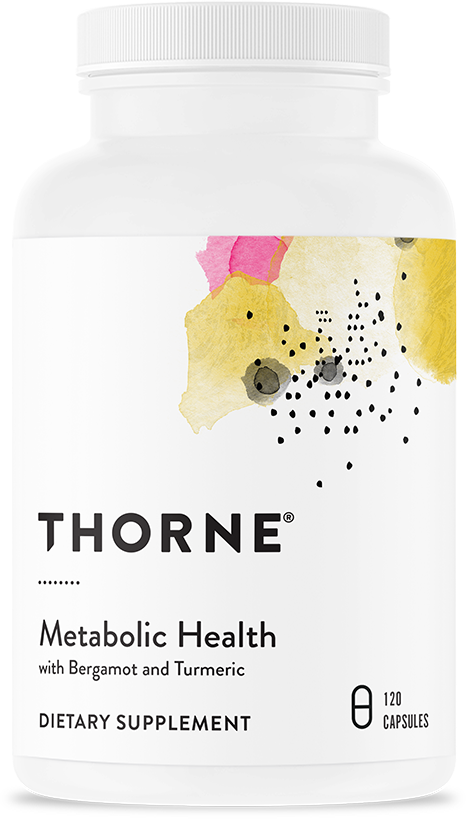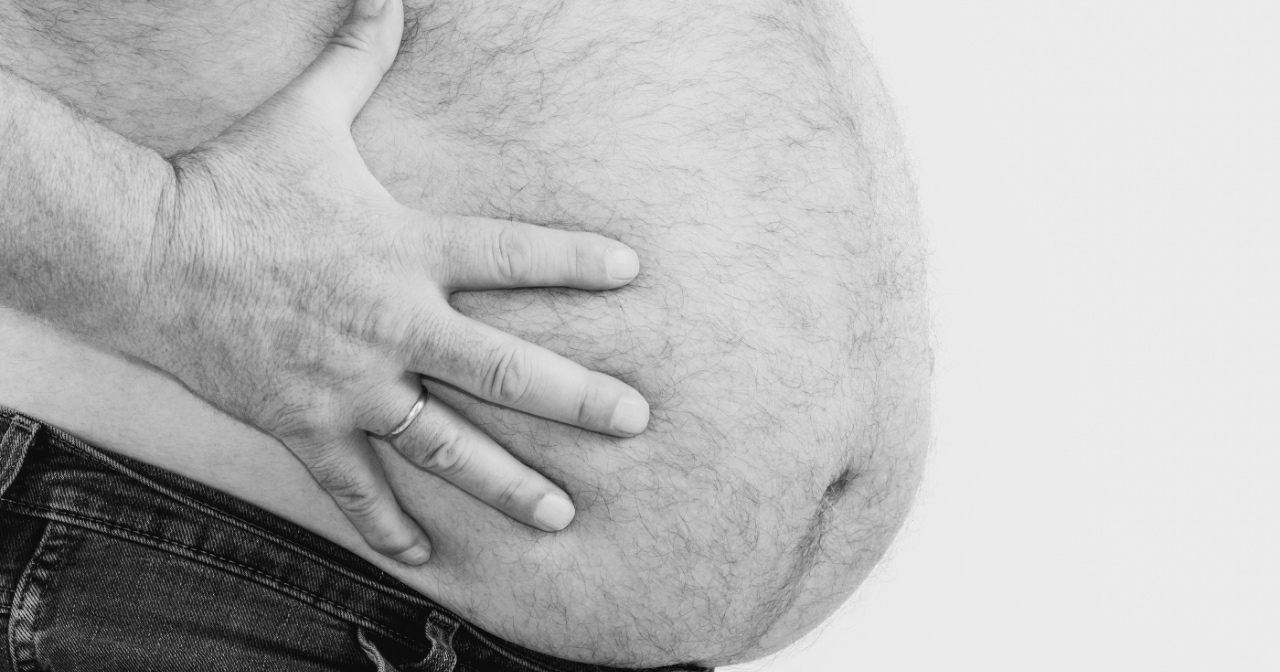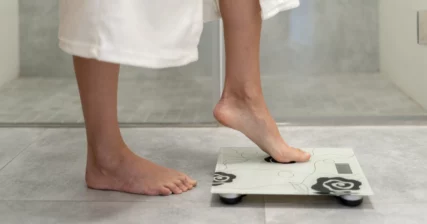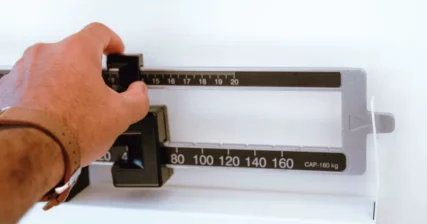Listen on: Apple Podcasts | Spotify
The chances are good that when you think about body fat, you don’t think about visceral fat, which accumulates over your organs and under your abdominal muscles.
Instead, you probably think about your love handles, saddlebags, or other fat that accumulates under your skin. That’s the fat we can see.
While any excess fat isn’t good for your health, visceral fat is terrible.
Fortunately, you’re not stuck with it if you’re willing to make some nutrition and lifestyle changes. Certain foods and supplements also help reduce visceral fat, which I’ve covered in the second half of this article.
Visceral Fat vs. Subcutaneous Fat
Stored body fat is classified as white, beige, or brown fat. Brown fat contains mitochondria and can increase metabolic rate. Unfortunately, most stored fat in humans is white fat, which does almost nothing other than store up fatty acids and makes it more difficult to squeeze into our clothes.
White fat is then categorized as subcutaneous, visceral, and ectopic fat.
Ectopic fat develops within organs, whereas visceral fat develops around organs.
Visceral fat accumulates under the abdominal muscles and over your organs, so it isn’t fat you can pinch or see. However, as it grows, you’ll notice your belly increase in size and your waistline disappear.
Subcutaneous fat accumulates all over the body. Women tend to develop larger subcutaneous fat stores over their thighs, butt, breasts, and triceps, creating a pear or gynoid shape. Men tend to accumulate subcutaneous fat on their belly, lower back, and obliques, giving them an apple or android shape.
Hormonal differences between men and women cause differences in fat storage. Moobs (man boobs) or fatter thighs are signs of low testosterone or excessive estrogen in men, and a round torso indicates elevated testosterone or low estrogen in women.
More and more women today, even those who are pre-menopause, develop an apple shape as an outcome of polycystic ovary syndrome (PCOS).
Correcting hormone imbalances alone won’t always improve total body fat levels. It just shifts fat stores to the areas more common in normal-hormone men and women.
Also, peri and post-menopausal women often develop hormonal balances more like males than females, which is why hormonal therapy is so valuable for post-menopausal women.
Healthy women carry more body fat than men, though excessive body fat in either sex can lead to long-term health problems.
The “healthy at any weight” mantra simply isn’t true. If you’re overweight, you’re at a higher risk of developing disease. That isn’t fat-shaming. It’s fact-sharing.
“Belly fat” is a combination of visceral fat accumulated over your organs and subcutaneous fat over your abdominal muscles. Reducing subcutaneous fat doesn’t always lead to lower visceral fat levels.
Maybe you’ve seen a bodybuilder with six-pack abs but a belly that looks like he’s pregnant. He has low levels of subcutaneous fat but high levels of visceral fat. He might look healthy, but he’s a heart attack waiting to happen.
Why is visceral fat so bad?
Higher body fat levels are associated with increased risks of numerous diseases. However, elevated visceral fat is an independent predictor of mortality. That means that elevated visceral fat likely causes preventable health problems that lead to one’s demise.
Most people think of belly fat as the squishy fat that hangs over your belt or that you can pinch with your fingers. The fat you see and feel is subcutaneous fat. While it isn’t healthy, it isn’t as bad as the fat you cannot see and feel.
Visceral fat accumulates under your abdominal muscles, and over and around your organs. Because it develops under your abdominal muscles, you cannot pinch it. It’s also difficult to measure unless you use expensive equipment, such as a DEXA machine.
Though you cannot see it directly, you can tell when someone carries excess visceral fat. Their belly gets round like an apple. You might even know someone who’s otherwise thin but has a belly that looks like a beach ball. They likely have a lot of visceral fat.
Visceral fat wreaks havoc on your cardiovascular health because it causes elevated inflammation levels. This is why liposuction does little to reduce one’s cardiovascular disease risk. It doesn’t get rid of the most harmful type of body fat.
Visceral fat cells secrete interleukin-6 (IL-6), a molecule that causes elevated inflammation and insulin resistance. Higher IL-6 levels correlate with elevated C-reactive protein as well.
The increased inflammation contributes to or causes numerous health problems, including:
- Accelerated aging
- Acid reflux and gastroesophageal reflux disease (GERD)
- Atherosclerosis
- Endothelial / vascular dysfunction
- Cancer
- Dementia
- Hypertension
- Insulin resistance
- Kidney disease
- Metabolic syndrome
- Non-alcoholic fatty liver disease
- Oxidative stress
- Type II diabetes
Higher visceral fat levels also raise the risk of developing a severe case of COVID-19. It may also be a contributing factor in the infection and vaccine-related heart problems so many people experience.
What causes visceral fat to accumulate?
You gain body fat for two main reasons:
- Your hormones cause your body to store fat instead of burning it, even when you need energy
- You consume more carbs and/or fat than you can use or store as glycogen
Hormones
Chronically high insulin prevents your fat cells from releasing fat for energy and depend on glucose, or carbohydrate, for energy. Even though you have enough stored fat for fuel, you won’t be able to tap into it.
Chronically high insulin develops from eating excessive amounts of carbohydrates and/or losing muscle so you don’t have a place to store the carbs you eat.
Chronically high cortisol also causes increased visceral fat stores. This has led some people to taking supplements or other therapies to block cortisol in an attempt to reduce visceral fat. This rarely works.
Instead, deal with the stress that’s triggering cortisol by learning to deal with the stress or by removing it from your life. The stress response is more complicated than a rise or fall in cortisol, which is why trying to block cortisol won’t have much of an effect.
Carbs and Fat
You don’t get fat by overeating protein. You do get fat from eating too much carbohydrate or fat, or both. Most people’s breakfast choices and snack choices are high in carbs and/or fat, and low in protein, which is why I often recommend skipping breakfast and avoiding snacks.
Fat travels to your belly as triglycerides, a combination of fatty acids and glucose. Though some people can maintain their health and minimize visceral fat by eating a low-fat, higher-carb diet, most people with high visceral fat levels do better on a ketogenic diet. Though you still consume fat, without carbohydrates you cannot create triglycerides.
We often refer to a big belly as a beer belly, but it turns out that beer consumption doesn’t directly impact your belly fat stores.
A common misconception is that beer consumption can specifically lead to belly fat accumulation. This misconception gave rise to the term “beer belly.” Studies have shown that beer consumption does not specifically increase the belly size but rather increases the overall body weight.
Nauli AM, Matin S.
It may be that heavy drinking causes hormonal changes that lead to bigger bellies in women and men, but beer itself isn’t the only culprit.
The bottom line is this: A sedentary lifestyle combined with a diet of excessive carbs and fat will cause you to accumulate visceral fat and significantly increase your risk of death.
You might also like: What You Need to Know About Gluten-Free Beer.
Foods and Supplements to Burn Visceral Fat
Eating certain foods and taking certain supplements can help you reduce visceral fat, but they’re not like taking a drug. If you keep doing what caused the bulging belly in the first place, simply adding one or two of these foods or supplements to your lifestyle won’t do much.
When you’re ready to commit to healthier nutrition habits and a muscle-building strength training program, add some, or all, of the recommendations below.
Bergamot
Multiple studies have shown bergamot has a positive effect on blood lipid levels, but a recent study showed that a specific form called bergamot phytosome lowers visceral fat stores.
Study participants took two 500 mg bergamot phytosome tablets, which were standardized to contain 11-19% flavanones, or a placebo. The supplemented group, which was made up of overweight and obese men and women, experienced a significant decrease in visceral adipose tissue (VAT), as well as improvements in total and LDL cholesterol levels.
In a different study using the same bergamot phytosome, type II diabetes patients who took the supplement saw a significant drop in blood sugar, LDL, and total cholesterol levels.
What is a phytosome?
I’ve mentioned the term “phytosome” in previous articles, such as in my article Curcumin: Health Benefits of Turmeric’s Key Compound. A phytosome is a patented delivery system developed by Indena, an Italian pharmaceutical company. Phytosomes are fatty acid shells. Botanicals such as bergamot or curcumin, which are poorly absorbed, get wrapped inside those fatty acid shells. The fatty acids easily pass from the digestive tract into the bloodstream, significantly increasing the bioavailability of the botanical.
In the United States, Thorne has exclusive rights to offer Indena’s unique delivery system. You’ll find bergamot phytosome in their brand new product called Metabolic Health, which combines both bergamot phytosome (Vazguard™) and curcumin phytosome (Meriva®).

Would bergamot essential oil have a similar effect? At this point, no research exists looking at bergamot essential oil and visceral fat. There is, however, significant amounts of research showing it impacts cholesterol levels in the same way as bergamot phytosome.
That’s not to say it won’t work. I only point out that that there isn’t any clinical studies showing that it does or doesn’t. Perhaps one day, researchers will investigate the impact of the essential oil on belly fat.
Inulin
Inulin is a soluble, indigestible fiber found in chicory root, onions, bananas, garlic, wheat, and artichokes.
Europeans consume 3-11 grams of inulin per day, but Americans consume only 1-4 grams.
Though you don’t digest this fiber, certain good bacteria can. When they do, they produce short-chain fatty acids, acetate, propionate, and butyrate. Along with supporting the integrity of the gut, these fermentation byproducts improve fatty acid levels in the blood and may slow or reduce the progression of type II diabetes.
They also increase satiety, reducing total calorie and carbohydrate intake.
Though inulin might not directly reduce visceral fat, it does indirectly reduce it by improving lipid and blood sugar levels while reducing total calorie, carb, and fat intake.
Abrams et al. observed a significant BMI reduction and less increase in fat mass for adolescents who received 8 grams oligofructose-enriched inulin daily for one year and this effect maintained in the following year.
AlBishi LA
Forskolin
Forskolin, the common name for Coleus forskohlii, is an herb that’s part of the mint family. Many fat-loss supplements stimulate the sympathetic nervous system, which may lead to jitters or excessive work by the heart. They can also increase overall stress.
Forskolin, on the other hand, increases production of hormone-sensitive lipase (HSL), which mobilizes stored fat. Research shows it reduces body fat and increases lean mass.
Thirty overweight men were divided into a control group and a treatment group. The treatment group took 250 mg of 10% forskolin extract two times per day for 12 weeks. Compared to the control group, the supplemented group lost body fat and increased lean body mass, bone mass, and free testosterone levels.
Since the study did not involve women, it’s unclear whether forskolin would help women reduce visceral fat or not.
Probiotics
Research on probiotics and visceral fat shows promise. For example, supplementation with Bidobacterium lactis HN019 led to weight loss and improved lipid and inflammation markers in people with metabolic syndrome.
In another study, overweight and obese women took a probiotic mixture of lactobacillus acidophilus, lactobacillus casei, lactobacillus lactic, bifidobacterium bifidum, and bifidobacterium lactis. The women experienced a reduction in abdominal fat.
Supplementation with Lactobacillus gasseri SBT2055 also led to lower abdominal fat levels.
To date, supplementation with Lactobacillus and Bifidobacteria strains has led to a reduction in body fat and visceral fat, but other strains have not proven to be effective for fat loss.
Protein
If you’ve followed me for any length of time, you won’t be surprised to see protein supplements on this list.
High-protein diets consistently improve body composition, including reducing visceral fat.
A 2021 study published in Nature showed that a higher-protein intake while following a reduced-calorie diet not only preserved muscle mass, but it also lowered visceral fat levels.
Both supplementing with protein shakes and consuming higher-protein foods have been shown to lower visceral fat stores. A protein shake isn’t magic compared to whole food protein. It’s just easier to make and sometimes it’s more palatable.
So, if you can consume a higher-protein diet while eating only whole food, go for it. If not, consider a high-quality, low-sugar protein supplement like whey, casein, etc.
Conjugated Linoleic Acid
According to numerous animal studies, conjugated linoleic acid (CLA) reduces abdominal fat. A 2001 study, published in the International Journal of Obesity showed promise in humans.
Twenty-five obese men took either 4.2 grams of CLA per day or a placebo. After four weeks, the CLA-treated men saw a significant difference in abdominal fat.
That said, other human studies haven’t came to the same results.
There’s little risk in taking CLA, so it might be worth trying. But I wouldn’t expect the same sort of consistent results as some of the other supplements mentioned here.
Dehydroepiandrosterone (DHEA)
DHEA is an adrenal hormone that aids in production of testosterone and estrogen. DHEA levels peak at about 20 years of age, and begin declining about age 25.
It’s one of the few hormones you can take as a supplement (I take it myself). Research with older adults shows that DHEA supplementation reduces visceral fat stores, though studies with middle-aged adults didn’t deliver the same results.
That’s not to say that middle-aged adults never benefit from DHEA. It offers other health benefits, and if levels are low enough, supplementation can be helpful.
When it comes to targeting visceral fat, though, DHEA is probably most effective with older adults.
Honorable Mentions
Most weight management-related nutrition research focuses on calories and macronutrients (carbs, fat, protein, and alcohol). In comparison, only a small amount has focused on micronutrients (vitamins and minerals).
Yet, our metabolism functions only when we consume adequate amounts of vitamins and minerals. That’s why I can never stress enough the importance of a high-quality multivitamin.
That being said, a group from Japan looked at the impact of micronutrients on visceral fat. They discovered seven nutrients that, when consumed at higher levels correlated with lower visceral fat stores.
The ingestion of 7 nutrients: soluble dietary fiber, manganese, potassium, magnesium, vitamin K, folic acid, and pantothenic acid, which are abundant components in vegetable diets, was significantly inversely correlated with a change in VFA.
Naoki O, et al.
Exercise and Visceral Fat
To minimize visceral fat, you must be physically active. More specifically, you need to build muscle mass and stamina. Doing so will increase your capacity for carbohydrates. It’ll also help you burn more fat and improve hormonal balance.
While some research shows that high-intensity interval training helps shed belly fat, other research shows strength training and aerobic exercise do as well.
I tend to avoid recommending high-intensity training for most people to avoid adding unnecessary physical stress to their already-overstressed bodies and minds.
In looking for the most “bang for your buck,” I always start people with resistance training. If you don’t have a solid strength training plan, check out Genesis, my free six-month strength and conditioning program.
Like other aspects of health, diet and exercise are essential for maintaining a healthy body and mind.
Do something. Don’t wait until it’s too late.
If you’re overweight, lose weight. If you already have markers of heart disease, it isn’t too late to slow, stop, or even reverse some of the damage.
You don’t even need to give up everything you enjoy in order to restore your health. But you can’t keep doing what you’ve been doing and hope that you’ll get better, even if a doctor will write you a prescription to deal with one of the symptoms.
References
AlBishi, Laila A. “Does Inulin Ingestion Reduce Visceral Fat Adiposity? Mini Review.” Biomedical Journal of Scientific & Technical Research, vol. 3, no. 2, Mar. 2018. DOI.org (Crossref), https://doi.org/10.26717/BJSTR.2018.03.000873.
Bel Lassen, Pierre, et al. “Protein Supplementation during an Energy-Restricted Diet Induces Visceral Fat Loss and Gut Microbiota Amino Acid Metabolism Activation: A Randomized Trial.” Scientific Reports, vol. 11, no. 1, Aug. 2021, p. 15620. www.nature.com, https://doi.org/10.1038/s41598-021-94916-9.
Chait, Alan, and Laura J. den Hartigh. “Adipose Tissue Distribution, Inflammation and Its Metabolic Consequences, Including Diabetes and Cardiovascular Disease.” Frontiers in Cardiovascular Medicine, vol. 7, 2020, p. 22. Frontiers, https://doi.org/10.3389/fcvm.2020.00022.
Chen, Jinjin, et al. “Bifidobacterium Adolescentis Supplementation Ameliorates Visceral Fat Accumulation and Insulin Sensitivity in an Experimental Model of the Metabolic Syndrome.” The British Journal of Nutrition, vol. 107, no. 10, May 2012, pp. 1429–34. PubMed, https://doi.org/10.1017/S0007114511004491.
Dryden, Jim. “Belly Fat May Drive Inflammatory Processes Associated with Disease – The Source – Washington University in St. Louis.” The Source, 8 Mar. 2007, https://source.wustl.edu/2007/03/belly-fat-may-drive-inflammatory-processes-associated-with-disease/.
Guess, Nicola D., et al. “A Randomized Controlled Trial: The Effect of Inulin on Weight Management and Ectopic Fat in Subjects with Prediabetes.” Nutrition & Metabolism, vol. 12, Oct. 2015, p. 36. PubMed Central, https://doi.org/10.1186/s12986-015-0033-2.
Jayedi, Ahmad, et al. “Central Fatness and Risk of All Cause Mortality: Systematic Review and Dose-Response Meta-Analysis of 72 Prospective Cohort Studies.” BMJ, Sept. 2020, p. m3324. DOI.org (Crossref), https://doi.org/10.1136/bmj.m3324.
Kadooka, Y., et al. “Regulation of Abdominal Adiposity by Probiotics (Lactobacillus Gasseri SBT2055) in Adults with Obese Tendencies in a Randomized Controlled Trial.” European Journal of Clinical Nutrition, vol. 64, no. 6, June 2010, pp. 636–43. www.nature.com, https://doi.org/10.1038/ejcn.2010.19.
Karava, Vasiliki, et al. “Update on the Crosstalk Between Adipose Tissue and Mineral Balance in General Population and Chronic Kidney Disease.” Frontiers in Pediatrics, vol. 9, Aug. 2021, p. 696942. PubMed Central, https://doi.org/10.3389/fped.2021.696942.
Mazloom, Kiran, et al. “Probiotics: How Effective Are They in the Fight against Obesity?” Nutrients, vol. 11, no. 2, Jan. 2019, p. 258. PubMed Central, https://doi.org/10.3390/nu11020258.
Mollace, Vincenzo, et al. “Hypoglycemic and Hypolipemic Effects of a New Lecithin Formulation of Bergamot Polyphenolic Fraction: A Double Blind, Randomized, Placebo- Controlled Study.” Endocrine, Metabolic & Immune Disorders Drug Targets, vol. 19, no. 2, 2019, pp. 136–43. PubMed, https://doi.org/10.2174/1871530319666181203151513.
Nauli, Andromeda M., and Sahar Matin. “Why Do Men Accumulate Abdominal Visceral Fat?” Frontiers in Physiology, vol. 10, Dec. 2019, p. 1486. PubMed Central, https://doi.org/10.3389/fphys.2019.01486.
Ozato, Naoki, et al. “Association between Nutrients and Visceral Fat in Healthy Japanese Adults: A 2-Year Longitudinal Study Brief Title: Micronutrients Associated with Visceral Fat Accumulation.” Nutrients, vol. 11, no. 11, Nov. 2019, p. 2698. PubMed Central, https://doi.org/10.3390/nu11112698.
Risérus, U., et al. “Conjugated Linoleic Acid (CLA) Reduced Abdominal Adipose Tissue in Obese Middle-Aged Men with Signs of the Metabolic Syndrome: A Randomised Controlled Trial.” International Journal of Obesity, vol. 25, no. 8, Aug. 2001, pp. 1129–35. DOI.org (Crossref), https://doi.org/10.1038/sj.ijo.0801659.
Rondanelli, Mariangela, et al. “Bergamot Phytosome Improved Visceral Fat and Plasma Lipid Profiles in Overweight and Obese Class I Subject with Mild Hypercholesterolemia: A Randomized Placebo Controlled Trial.” Phytotherapy Research, vol. 35, no. 4, Apr. 2021, pp. 2045–56. PubMed Central, https://doi.org/10.1002/ptr.6950.
Rosenblum, Jennifer L., et al. “Calcium and Vitamin D Supplementation Is Associated with Decreased Abdominal Visceral Adipose Tissue in Overweight and Obese Adults1234.” The American Journal of Clinical Nutrition, vol. 95, no. 1, Jan. 2012, pp. 101–08. PubMed Central, https://doi.org/10.3945/ajcn.111.019489.
Stress Cortisol Connection. https://www.unm.edu/~lkravitz/Article%20folder/stresscortisol.html. Accessed 30 Nov. 2021.
Villareal, Dennis T., and John O. Holloszy. “Effect of DHEA on Abdominal Fat and Insulin Action in Elderly Women and MenA Randomized Controlled Trial.” JAMA, vol. 292, no. 18, Nov. 2004, pp. 2243–48. Silverchair, https://doi.org/10.1001/jama.292.18.2243.



